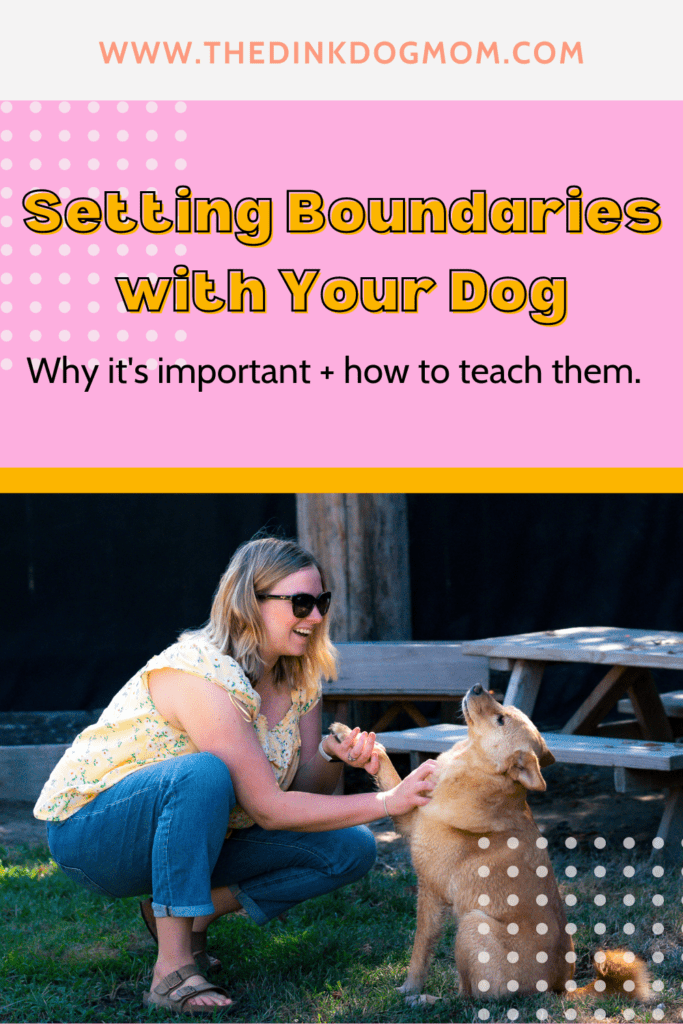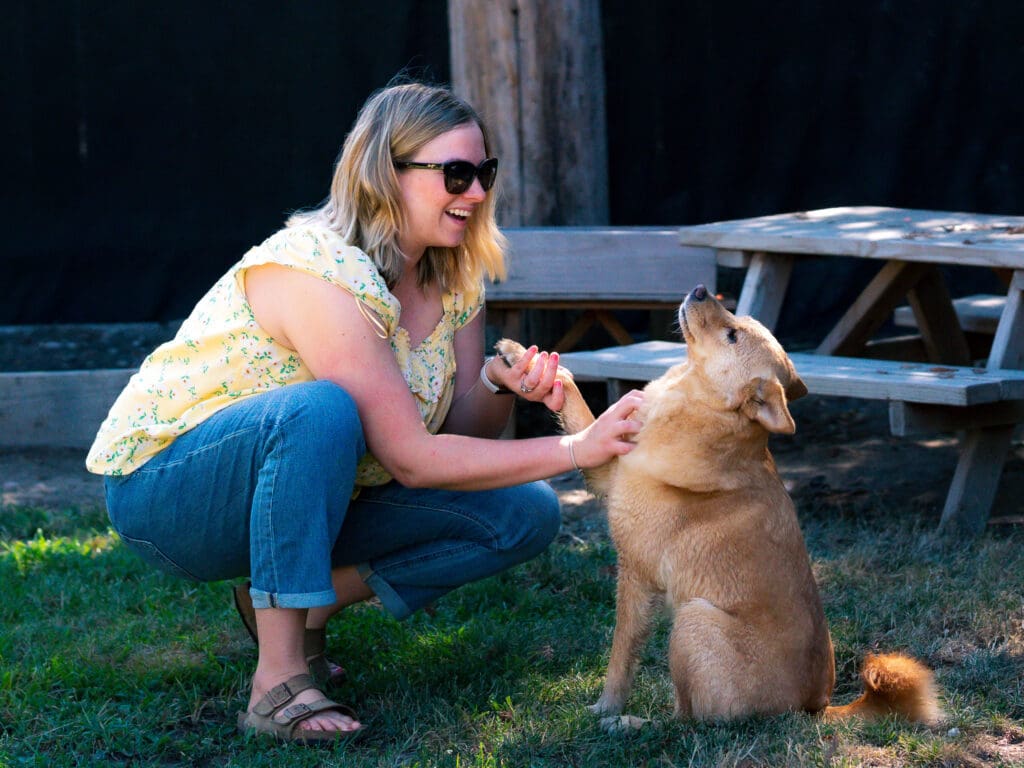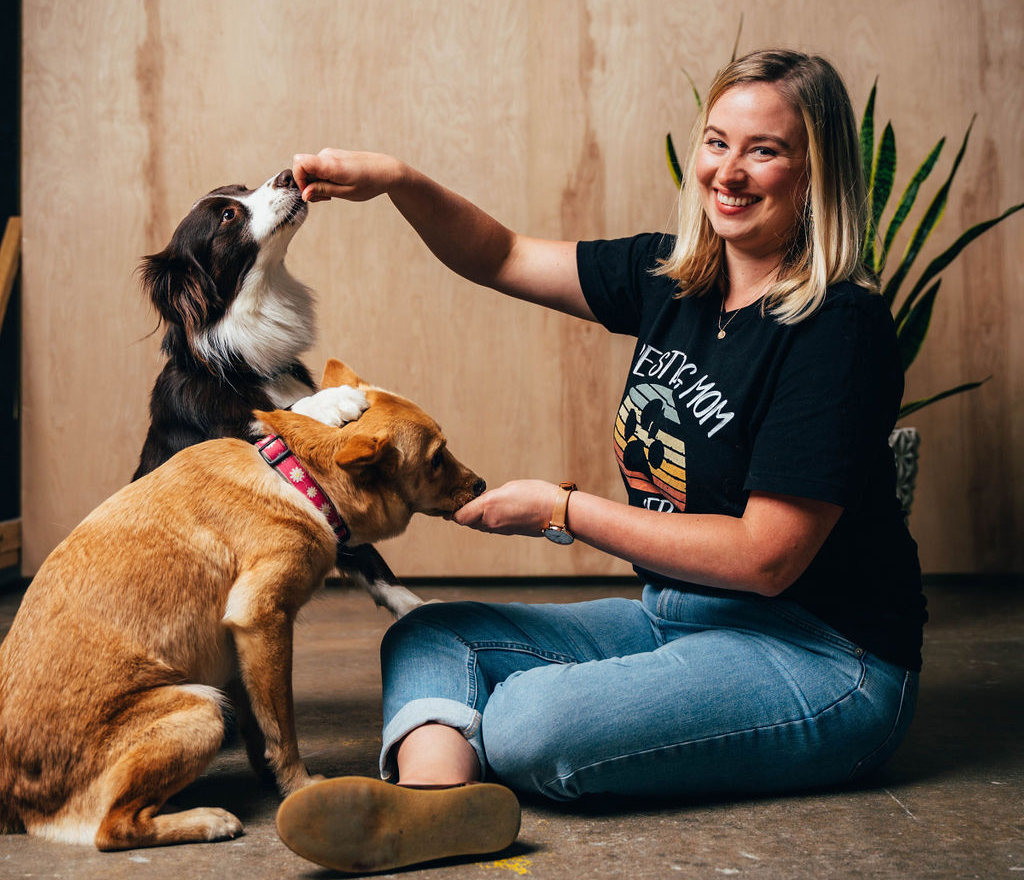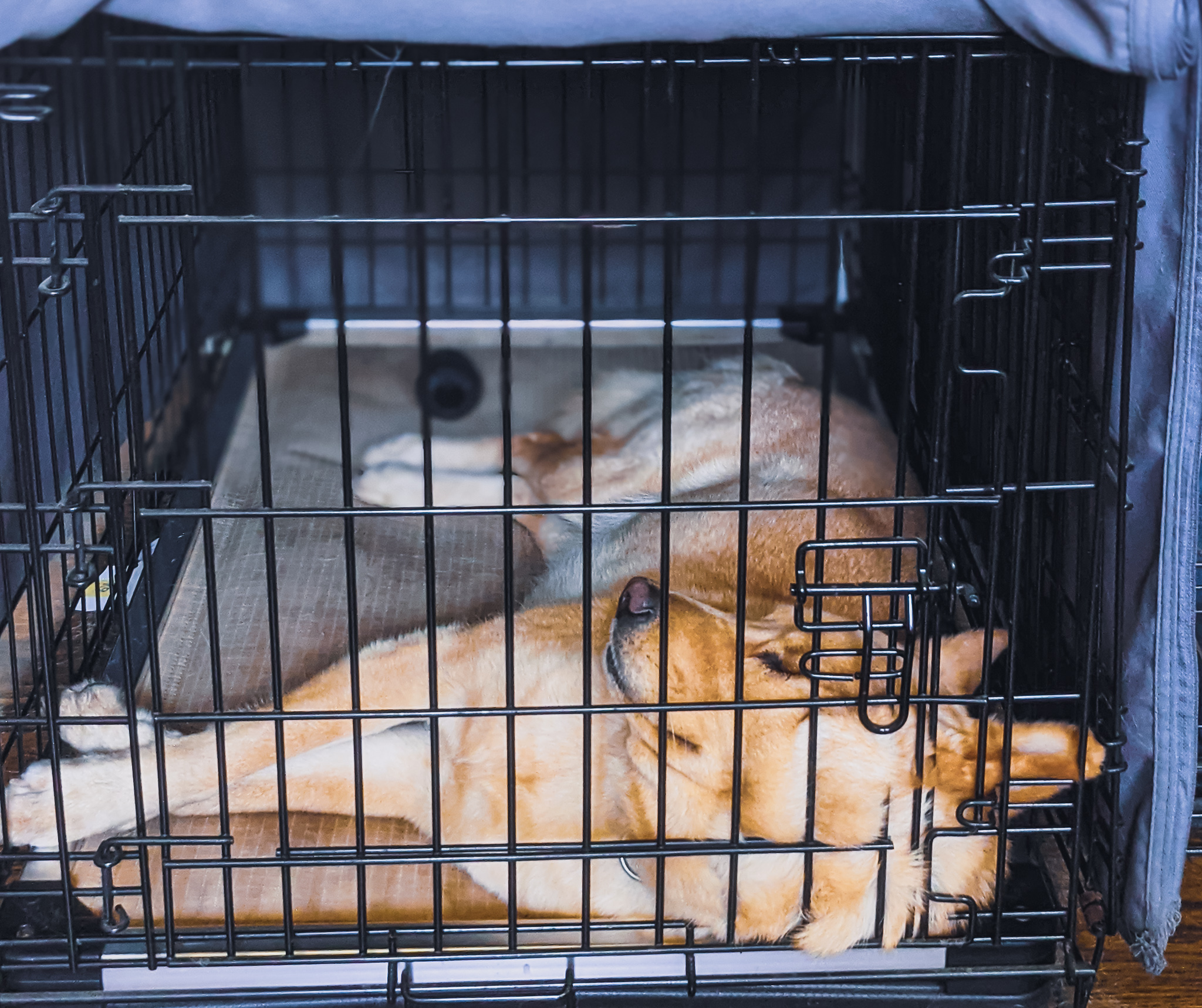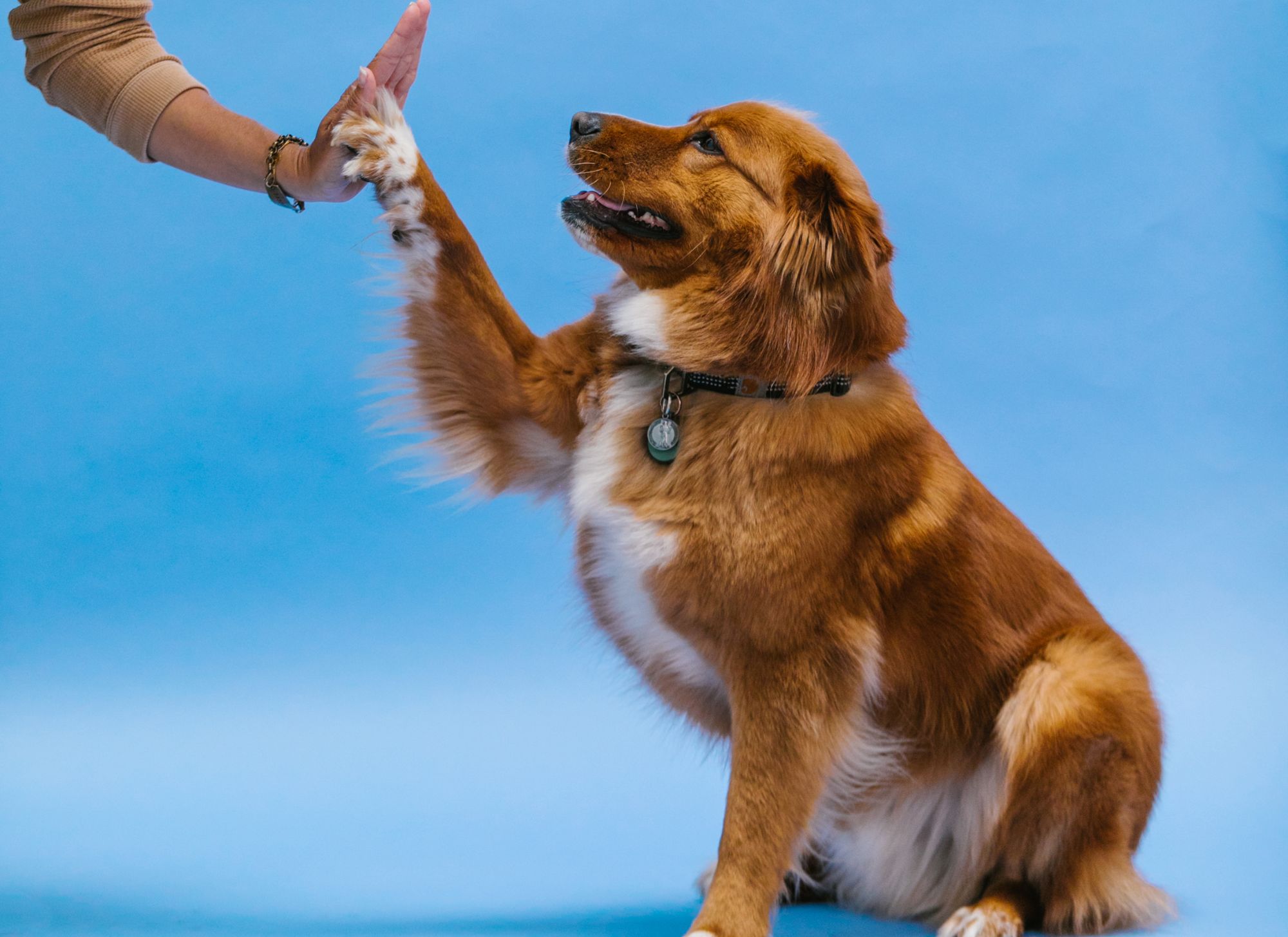Look, I know “boundaries” is a word that gets used a lot these days, but it’s because they are really, really important. Any relationship you have needs healthy boundaries, whether that’s your relationship with your partner, your parents, your best friend, or your boss. So, in an age of relationship-based dog training, it’s really not that weird to think about boundaries for dogs.
But what are boundaries and why exactly are they important? What boundaries should you set with your dog and which ones should you throw out the window?
These are all excellent questions that I’m excited to dive into, because building boundaries with your dog is an important part of creating a healthy, happy relationship.
Dog Boundary Training Myths
Before we begin, I want to take a moment and dispel some myths that exist around teaching dogs boundaries. People who adhere to the pack leader mentality claim that dogs need boundaries and structure, otherwise they go crazy. This is a little bit misleading, While boundaries are helpful for creating predictabiltiy, which does help your dog navigate the complexities of the human world, they are not a list of rules your dog “needs” to follow.
On the contrary, setting boundaries is about our wants and needs. We are the ones who need the boundaries. And, on the flipside, it’s not our dogs who need to “respect” our boundaries. It’s us who need to learn how to respect our dogs’ boundaries.
Why Teach Your Dog Boundaries?
When you have clear boundaries with your dog, everyone wins. It keeps your sanity in tact and your dog safe while offering them predictability– something that is key to their mental wellbeing in our confusing, complicated, and often scary human world. It’s also important to look at boundaries for dogs as a two-way street: you want your dog to follow your boundaries, and in turn you should follow theirs.
Some boundaries we might set for our dogs could be:
- Not coming into the kitchen while you are cooking.
- Walking nicely on a leash.
- Not jumping on you when you walk through the door.
Some boundaries our dogs might have that are important for us to respect:
- Not bothering them when they are sleeping or eating.
- Letting them leave a space they are not comfortable in.
- Not petting them when they don’t want to be pet.
Learning and respecting our dog’s boundaries can get tricky, as dog communication can start really subtle. For example, a growl is a lot more noticeable than a lip lick, even though they both serve the same function.
How do you train dog boundaries?
Dog’s don’t have the same concept of “respect” that we have. We might do or not do something just because a person asked, but dogs follow the law of consequences. An action that leads to desirable outcomes gets repeated while actions that lead to punishment get avoided. This means that if we want our dog to “respect” a boundary, it is our responsibility to teach them how.
If you teach them through punishment, you run the risk of confusing your dog at best (they don’t understand what is triggering the punishment) and damaging your relationship with your dog at worse (they learn punishment comes from you and start to become afraid of you). Instead, it’s useful to focus on an alternative behavior that you can teach your dog that is incompatible with the one you don’t want them to do.
What does this look like?
Let’s go back to the “no dogs in the kitchen while cooking” boundary. You could just chase your dog out of the kitchen or yell at them, but that doesn’t necessarily teach them anything other than to avoid you. They might start to be afraid of the kitchen or even you.
Instead, you could teach your dog the cue “place.” Laying on a mat or a dog bed (out of the kitchen or in a designated space in the kitchen) is incompatible with getting underfoot. Teaching “place” is pretty clear cut: your dog learns that if they lay in a deisgnated spot, they get a reward. It can take time to build a strong reinforcement history, but it does work.
Alternatively, you could also crate your dog with a chew while you cook or put them in a different room to hang out. You might feel guilty about this initially, but remember that boundaries are the key to a healthy, happy relationship. They keep you sane. It’s okay to not want your dog in the kitchen while you are busy making dinner. Plus, your dog will be a lot happier in a safe space than they would be if they were constantly being yelled at or chased away.
It might also be tempting to feel like your dog should just know to stay out of the kitchen. That they should just respect what you want. But, ultimately, this is not how dog’s think, and it’s unfair to expect them to “just do it.”
What boundaries should you set with your dog?
The boundaries you set depends entirely on you and your dog. What bothers one person might not bother another, so there really isn’t a one-size-fits-all recommendation. A good way to approach boundaries with dogs is to consider what will make your life easier. What are things your dog does that really bother or upset you? What do you need to do to meet your own needs?
Maybe your dog drives you crazy by barking at every little thing, or maybe you wish they wouldn’t try to bolt out the front door every time you open it. Maybe you need a brisk walk every day that doesn’t involve stopping to sniff the roses every 3 seconds.
We all have those things that get under our skin, and we all have things we want or need to do. Identifying them with honesty (no matter how silly) is a great start to creating healthy boundaries with our dogs that will benefit them and us!
Once you’ve figured out your boundaries, determine an alternate behavior you can teach. This is how you will “enforce” your boundaries. If you aren’t sure where to start, reach out to a credentialed force free dog trainer for advice. Sometimes the alternate behavior is so silly, so simple, that we would never have thought of it on our own. Other times it’s very nuanced and complex. Either way, a professional trainer will help you teach your dog boundaries in a positive and healthy way.
Learning Your Dog’s Boundaries
I mentioned before that it can be a little bit tricky learning your dog’s boundaries. Not all dogs will growl when they are uncomfortable, and often there are a lot of subtle signs long before your dog will make a noise. Understanding dog body language can be incredibly useful here. Some examples of uncomfortable body language include:
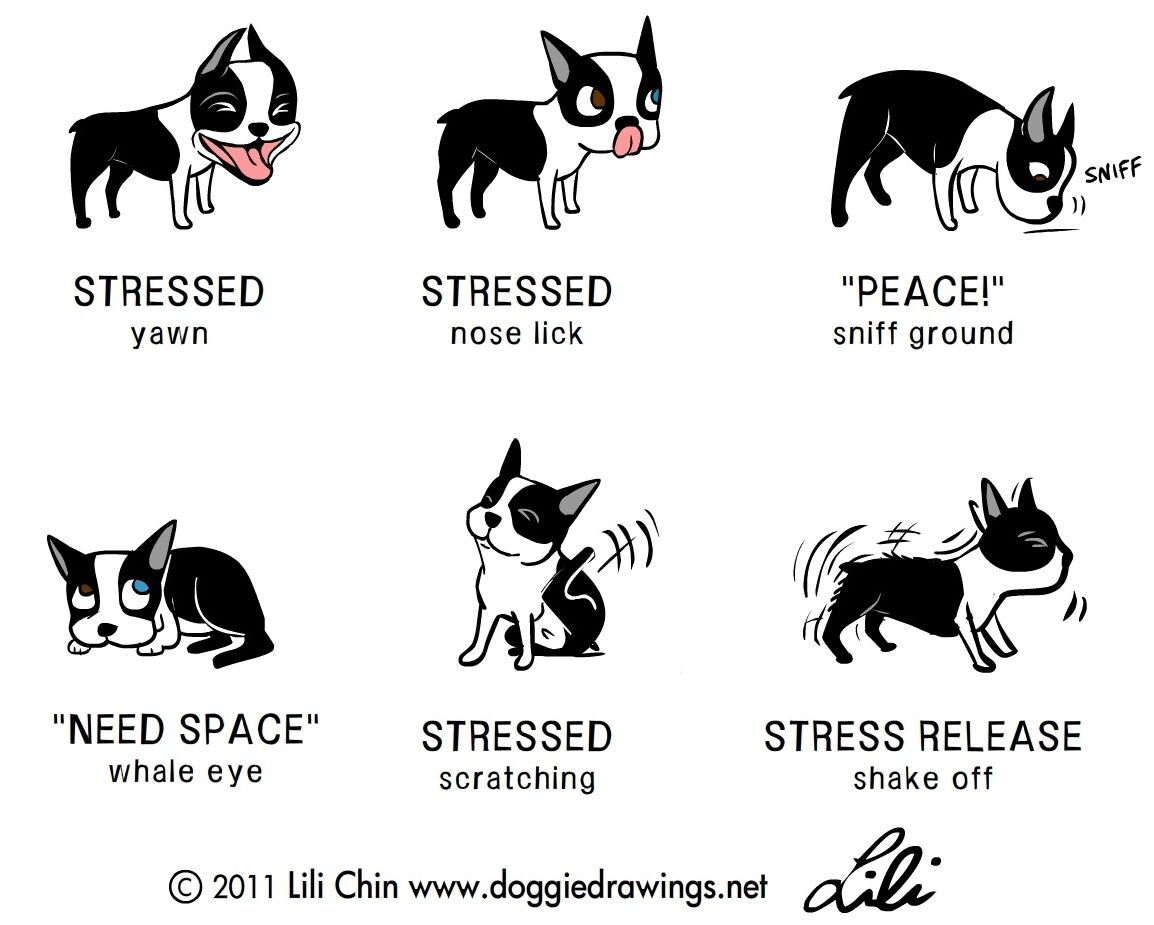

If you notice your dog engaging in the above behaviors, consider what you are doing and what you can do instead to give them space.
And, of course, using good ol’ fashioned common sense can go a long way. Don’t bug your dog when they are sleeping or eating, don’t force them to cuddle with you when they don’t want to, don’t frighten them on purpose, etc.
What Boundaries Will you Set With Your Dog?
Setting boundaries with your dog will makes life easier for everyone. When you know your boundaries and have a way to enforce them, you are a lot happier. Your dog will annoy you a heck-of-a-lot less. And, when you respect your dog’s boundaries, their trust and confidence in you gets stronger.
